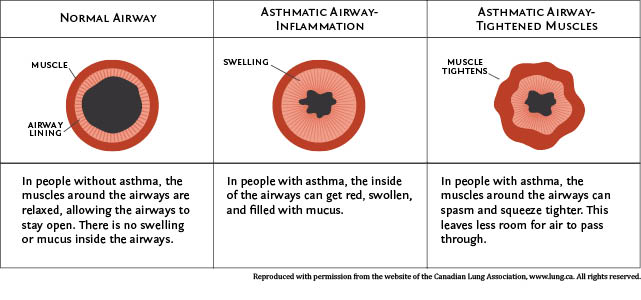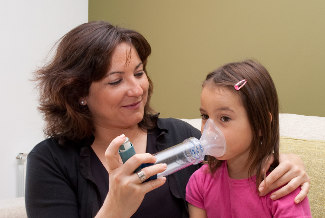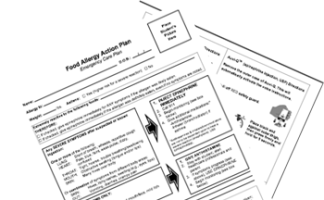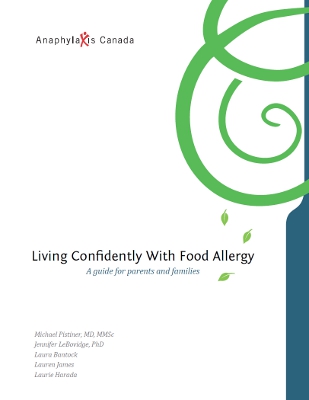Asthma is a chronic disease that affects the lungs. People who have food allergies are at increased risk of asthma.
Two changes happen in the airways of a person with asthma. One is inflammation (irritated and swollen lungs), causing mucus to be produced, and the second is tightening of the muscles around the airway, causing the airway to become smaller. With increased mucus and a smaller airway, it is difficult to move air in and out of the lungs.

Symptoms of asthma include cough, being short of breath, wheezing and tightness of the chest. There are many different “triggers” that cause asthma symptoms. People can have different asthma triggers and symptoms can vary from mild to severe.

Asthma is a chronic disease and often lasts a person’s entire life. If your child has asthma, it is very important that they are seen on a regular basis by their doctor and that their asthma is well controlled.

- Avoiding contact with their specific asthma “triggers”.
- Taking the medicine prescribed by their doctor.
- Following their asthma action plan.
- Having regular follow-up visits with their doctor.
You can learn about asthma management by speaking with an asthma educator or participating in an asthma education program.
Ask the doctor to help you fill out both an asthma action plan and Anaphylaxis Emergency Plan. Don’t forget to discuss the signs and symptoms of asthma and anaphylaxis with your child’s doctor.

If your child has difficulty breathing during an allergic reaction, give the auto-injector before giving asthma medication. Keep in mind that epinephrine will treat severe asthmatic symptoms as well as anaphylaxis. Asthma is a major risk factor for death in severe allergic reactions caused by food.2 16

- Involve your child in managing their asthma.
- Teach your child when and how to use their asthma medication.
- Tell your child to talk to an adult if they are having asthma symptoms such as coughing, chest tightness, wheezing or shortness of breath.
Web Resource: Asthma & Allergy Foundation of America (AAFA)
Web Resource: AAFA’s Ally & Andy’s Awesome Asthma and Allergy Activities
2. National Institute of Allergy and Infectious Disease (NIAID)-Sponsored Expert Panel. “Guidelines for the Diagnosis and Management of Food Allergy in the United States: Report of the NIAID-Sponsored Expert Panel.” The Journal of Allergy and Clinical Immunology 126.6 (2010): S1-S58.
16. Bock, A.S., Muñoz-Furlong, A. and Sampson, H.A. “Fatalities due to anaphylactic reactions to foods.” The Journal of Allergy and Clinical Immunology 107.1 (2001): 191-193.
